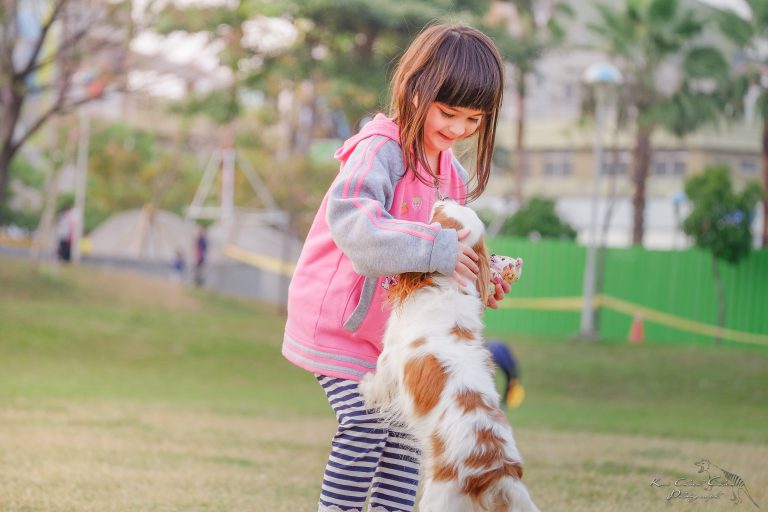Blog How Does Your Pup Love Ya
Dogs communicate with us through body language and actions — here are are four ways dogs show affection to humans.
How do dogs show affection to humans? Great question! Even those who have lived with dogs can sometimes misread canine language.
Although, please keep in mind that something occurring to a dog IS aversive if the dog feels it is. In other words, it’s not just children who need to ask if they may pet someone else’s dog. Even if given permission to say hello, please not only be respectful of the dog’s space, but also watch his body and face closely to make sure that your petting is pleasing. Not all dogs want to be touched by strangers!
Here are four ways dogs show affection:
- Dogs show affection with their tails
A wagging tail speaks volumes (although what is communicates isn’t as important to canine language as is a dog’s face and overall body posture.
A dog’s tail that is up over his back and stiff is not a come-let’s-be friends tail. Walk away from a dog showing such stiffness, as it is often a warning flag. Look for the big, circling tail and wagging butt, even for the dogs with little stubs as tails.
- Dogs show affection with their faces
What’s happening with a dog’s face when she is happy with a human? Dogs can smile or grin. In general, you want to see an open, relaxed mouth and not a shut-tight grimace. Panting can be a sign of stress, so a happy dog might have her mouth open toward you, but shouldn’t be excessively panting — unless it’s a hot day or she has been exercising. Canine language must be taken in context.
The I-love-you dog eyes are not hard but soft, round, and probably looking you right in the eyes, which is completely different than a hard stare with little to no blinking coming from a dog — that’s a warning to back up. You also don’t want to approach a dog showing “whale eyes,” where the eyes are wide and you can see the whites around the pupils.
Watch out for “cheek puffing,” as well, where his mouth is closed and he rapidly blows air out of his mouth, causing his cheeks to go in and out. That’s often a sign of nervousness.
- Dogs show affection with jumping
Not all humans, of course, like to be jumped on, but often dogs do so to get closer to your face and give you a big “Welcome home, friend!” lick. The human face is incredibly important to dogs. They are so attuned to us that they know us better than we know them. Most humans like to see an exuberant dog greeting them when they get home. Please be aware that sometimes dogs jump on humans for other reasons, such as those who suffer from separation anxiety and only get relief when their humans walk through the door. Frantic jumping tells you something a bit different than happy-camper jumping.
Also, some dogs can jump and boink you in the face hard with their muzzle. That is not a friendly greeting. It’s hard to get a good look at a dog’s eyes and mouth position as they are jumping toward your face, so while jumping up can be an indicator of happiness that you have returned to the home castle, it can mean others things, as well.
- Dogs show affection with leaning
Many dogs, even large ones love to lean on their human’s leg while getting a scratch hello. On the other paw, sometimes an insecure dog leans in for comfort and support. Nothing wrong with that.Take a look at what the face, body, and tail are doing as a dog leans in. You want to see an open mouth, rounded and relaxed eyes, and a relaxed body with a swooping big tail or butt wag.
It’s helpful to dogs everywhere for humans to slow their approach when meeting a new dog and to consider: Does this dog really want to greet me? Don’t take it personally if the dog isn’t interested. Petting such a dog is harmful to that dog, and who wants to be pushy with another species? Do take it personally, though, if you get any of the signs of affection noted above.

